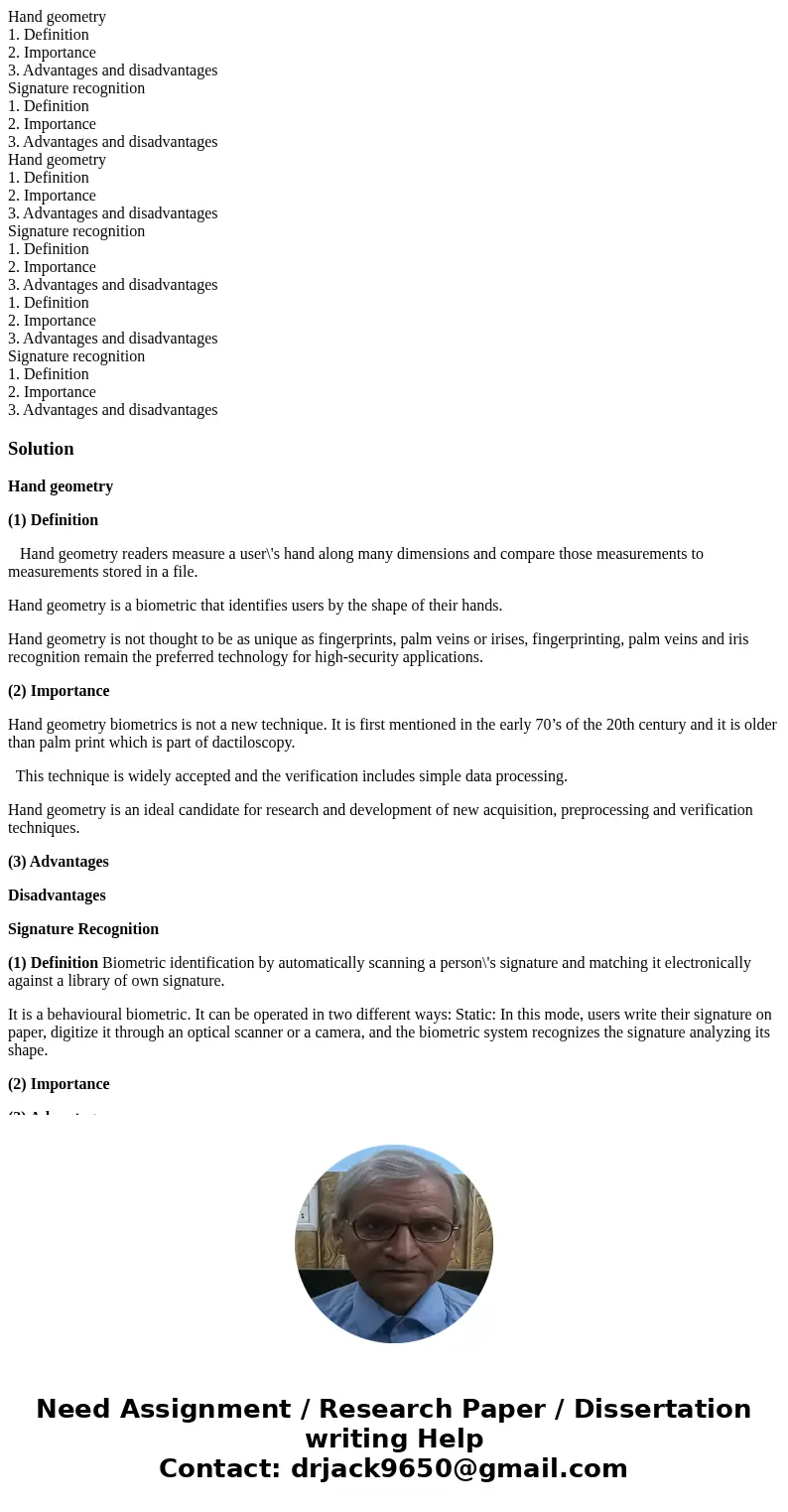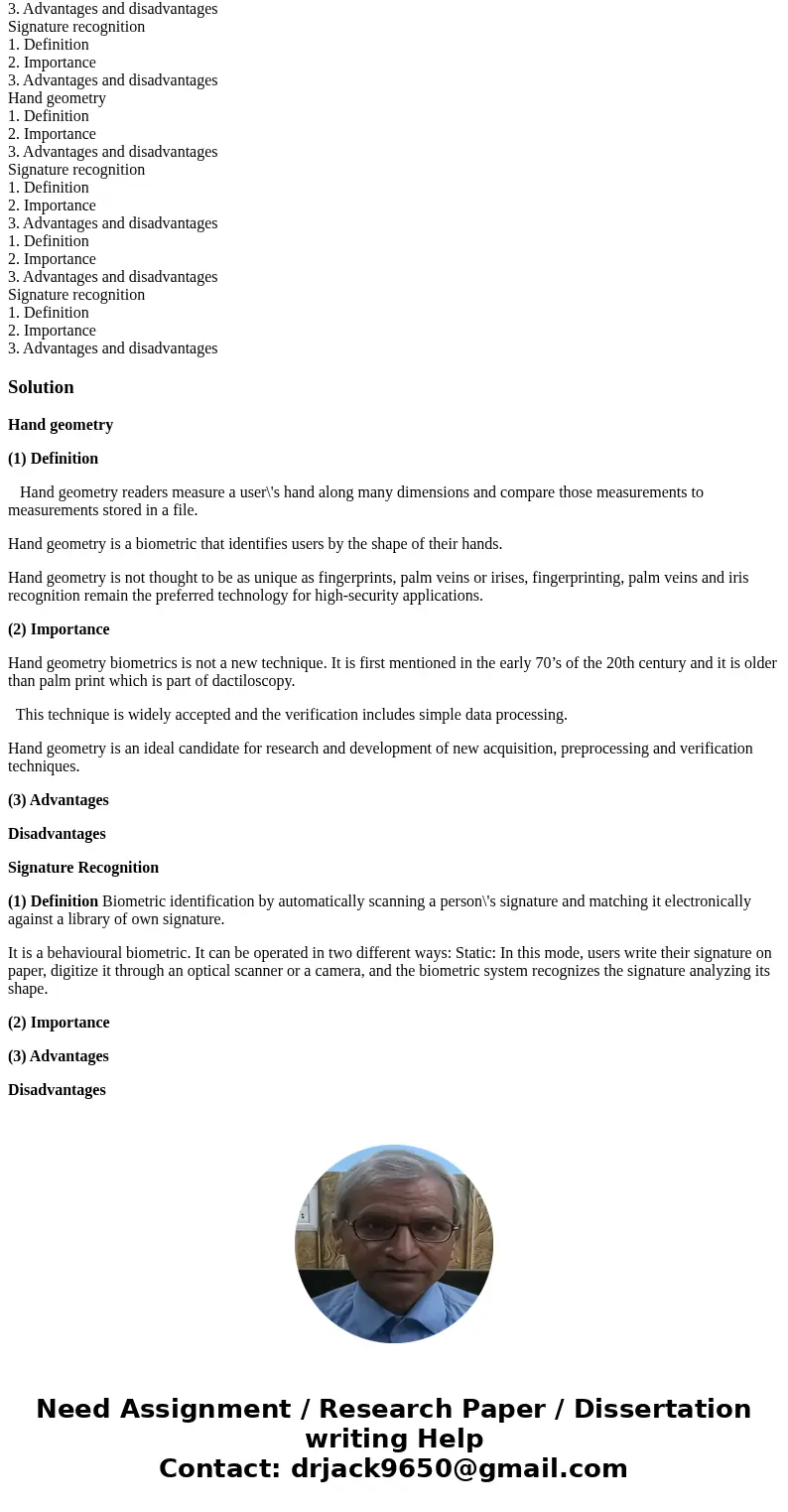Hand geometry 1 Definition 2 Importance 3 Advantages and dis
Solution
Hand geometry
(1) Definition
Hand geometry readers measure a user\'s hand along many dimensions and compare those measurements to measurements stored in a file.
Hand geometry is a biometric that identifies users by the shape of their hands.
Hand geometry is not thought to be as unique as fingerprints, palm veins or irises, fingerprinting, palm veins and iris recognition remain the preferred technology for high-security applications.
(2) Importance
Hand geometry biometrics is not a new technique. It is first mentioned in the early 70’s of the 20th century and it is older than palm print which is part of dactiloscopy.
This technique is widely accepted and the verification includes simple data processing.
Hand geometry is an ideal candidate for research and development of new acquisition, preprocessing and verification techniques.
(3) Advantages
Disadvantages
Signature Recognition
(1) Definition Biometric identification by automatically scanning a person\'s signature and matching it electronically against a library of own signature.
It is a behavioural biometric. It can be operated in two different ways: Static: In this mode, users write their signature on paper, digitize it through an optical scanner or a camera, and the biometric system recognizes the signature analyzing its shape.
(2) Importance
(3) Advantages
Disadvantages


 Homework Sourse
Homework Sourse